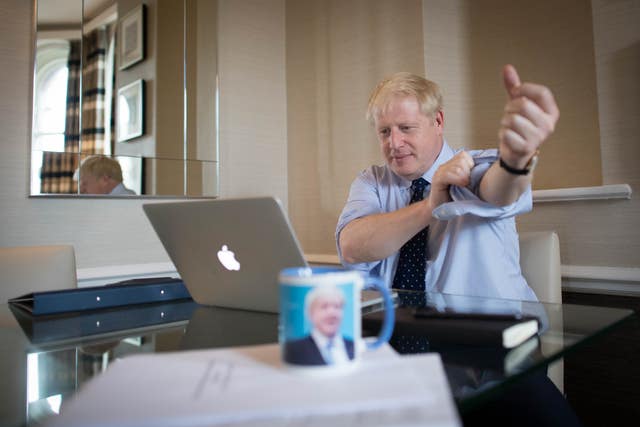Johnson’s Brexit plan: Key questions about the backstop replacement blueprint
Prime Minister Boris Johnson is setting out his proposals as the clock ticks down to the scheduled October 31 exit day.

Prime Minister Boris Johnson is setting out his Brexit plan, which he describes as a “fair and reasonable compromise” that all sides can agree on.
But reaching an agreement will be far from straightforward – and may yet prove impossible.
– What are the issues which need to be resolved?
The problem remains the Northern Ireland backstop – the safety net intended to guarantee there is no return of a hard border on the island of Ireland.
Under the Withdrawal Agreement negotiated by Theresa May, if there is no long-term trade agreement in place that ensures an open border, the UK would remain closely tied to EU rules and its customs union.
Mr Johnson has insisted the measure has to be scrapped as being in a customs union would prevent the UK striking trade deals and his blueprint sets out in a legal text how he intends to achieve this.

– What is Mr Johnson’s alternative?
According to a briefing received by the Daily Telegraph, the UK would remain closely tied to the EU’s rules during a transition period ending in 2021 and then enter a free-trade agreement with the bloc.
After that, in a plan that has been dubbed “two borders for four years” Northern Ireland would be kept in a special status until 2025, leaving the EU customs union alongside the rest of the UK, but remaining aligned on all single market rules for agriculture and industrial goods.
This will create a regulatory border across the Irish Sea between Great Britain and Northern Ireland and a customs border between Northern Ireland and the Republic of Ireland.
At the end of the period the Northern Ireland Assembly – which has been suspended since January 2017 – will be free to choose whether to remain aligned to the EU in the future to protect north-south trade or follow British rules, which would probably have diverged from Brussels over the period.
– Will it work?
Ireland’s reaction to the plan was dismissive: deputy prime minister Simon Coveney said the reported blueprint was “no basis for an agreement” and “concerning to say the least”.

Downing Street, meanwhile, blamed Dublin for the briefing to the Telegraph, which does not bode well for a positive atmosphere in negotiations over the coming days.
The European Union – which has repeatedly demanded “concrete and legally operational” proposals from the UK for an alternative to the backstop – will respond once it has seen the formal text.
– Any other reaction?
Former Northern Ireland secretary Lord Hain suggested the proposal would be in breach of the 2018 European Union (Withdrawal) Act and would “sabotage” the Good Friday Agreement by creating a border with checks.
Trade expert David Henig, from the European Centre For International Political Economy think tank, said the plan “seems to consist of the worst parts of the backstop and no deal” and “I’m struggling to see any way this is acceptable to the EU or Northern Ireland.
– Can a deal be done before October 31?
Number 10 sources said the proposals would be a final offer and if the EU refused to engage then the UK would walk away from talks until after it has left the bloc.
Mr Johnson said a deal would need to be largely completed by October 11, the day the agenda for the October 17 European Council summit of EU leaders is set.
“Ten days should be enough,” he told the Sun. “If there’s a deal to be done, it could be done in that time.”
– What if there isn’t a deal?
Many of the same problems will present themselves – the UK will leave the customs union and single market, the measures which currently keep trade flowing freely.
The border will therefore become the frontier between the European Union and a “third country” outside its rules.
Taoiseach Leo Varadkar has promised to do “everything we can to avoid checks on or near the border” but inspections would take place at ports, airports and businesses.
The UK’s no-deal planning chief Michael Gove told MPs “we will have no checks at the border and no tariffs” but “we wait to see what Ireland and the EU Commission will decide”.
– So will the UK be leaving the European Union on October 31?
If you believe Mr Johnson, then emphatically yes. A senior Number 10 source said the Government is “either going to be negotiating a new deal or working on no deal — nobody will work on delay”.
But the Benn Act – the legislation rushed through Parliament after backbenchers took control of the Commons agenda – requires the Prime Minister to seek a delay to Brexit if MPs have not approved a deal, or agreed to leave the EU without one, by October 19.
Mr Johnson has repeatedly said he will both obey the law and meet the Halloween deadline with or without a deal – but he has not been clear about how he intends to do both things.
It could all result in yet another constitutional crisis being played out in the courts.





